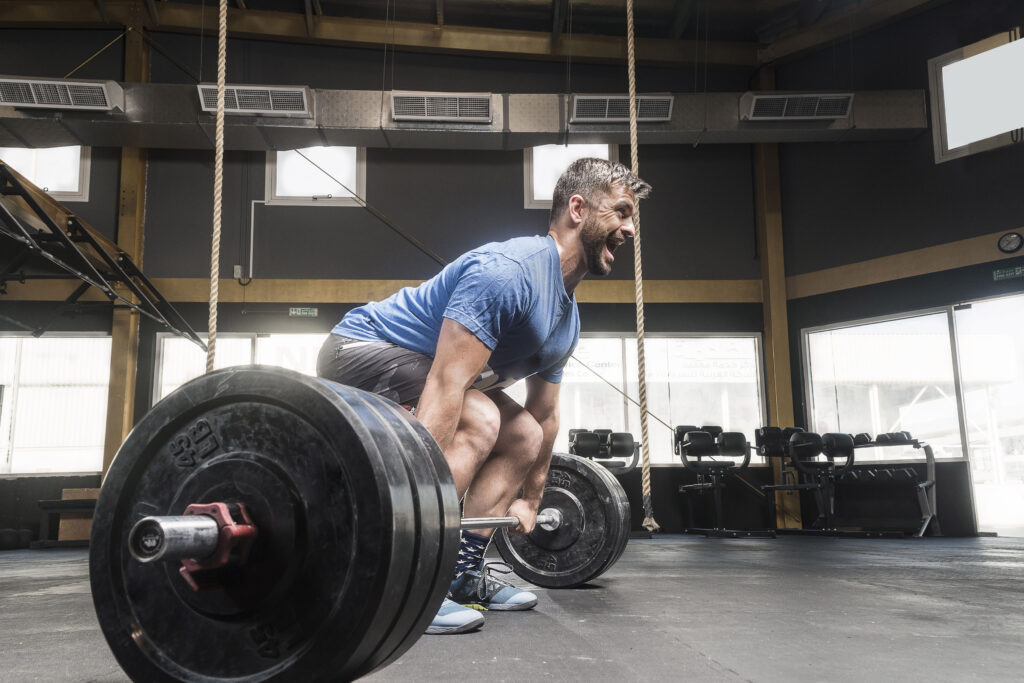What is Training to Failure?
Training to failure means performing repetitions until you physically can’t complete another one with good form. This is common in strength routines and bodybuilding circles, especially for exercises like bicep curls, bench press, and leg extension.
Why Do People Train to Failure?
The belief is that training to failure maximizes muscle fiber recruitment, especially fast-twitch fibers essential for strength and hypertrophy. It’s a strategy used by many to push their limits and maximize muscle stimulation.
What the Research Says
A 2021 meta-analysis published in Sports Medicine found that training to failure results in slightly greater hypertrophy, but primarily when using lighter loads (less than 60 percent of 1RM). When heavier weights are used (above 80 percent of 1RM), going to failure does not offer significant benefits in terms of muscle size or strength improvements (Grgic et al., 2021).
Supporting these findings, a 2016 study by Martorelli et al. in the European Journal of Applied Physiology compared resistance training to failure vs. non-failure using equalized volume and intensity. They found no significant difference in muscle hypertrophy between the two groups, suggesting failure isn’t mandatory when other training variables are well-managed.
A 2018 randomized controlled trial by Pareja-Blanco et al., published in the Journal of Strength and Conditioning Research, showed that participants who trained with higher movement velocity and avoided failure maintained greater neuromuscular performance and strength over time than those who trained to failure. This supports the idea that training quality and fatigue management can be more important than hitting failure.
Additionally, a 2020 study by Santana et al. published in Applied Physiology, Nutrition, and Metabolism found that older adults performing resistance training to failure did not experience greater muscle gains than those who trained with reps in reserve. The failure group also reported greater fatigue, which may interfere with recovery and long-term adherence.
Together, this body of research indicates that while training to failure may provide a slight hypertrophic edge under specific conditions, it’s not superior for strength development, and it may even hinder progress if used too frequently—especially with compound lifts or in populations with lower recovery capacity.

Understanding Types of Failure
There’s a key difference between momentary muscular failure and technical failure. This distinction is heavily debated on Reddit and Jefit forums. Misunderstanding this can lead to overtraining or poor technique.
The Downsides of Always Going to Failure
Training to failure every session can impair recovery, increase soreness, and lead to form breakdown. This is particularly risky for compound lifts like deadlifts and squats where form is critical to safety.
Strategic Use of Failure for Better Results
Studies show that failure training is most beneficial at the end of a workout and for isolation movements. This approach, often called “intensification,” can boost gains without sacrificing recovery.
What the Jefit Community is Saying
Many Jefit users are experimenting with failure periodization—alternating between failure and non-failure weeks. This method balances stimulus and fatigue while allowing steady progression.
When Should You Use Failure Training?
Consider saving failure training for:
- The last set of an exercise
- Isolation or machine-based movements
- The final week of a mesocycle (training block)
- Times when you can recover fully (good sleep, nutrition, etc.)
Tips for Using Failure Effectively
- Use failure on accessory work, not compound lifts
- Track RIR (reps in reserve) with the Jefit app
- Don’t rely solely on failure for progress—focus on volume and progressive overload
Final Thoughts: It’s a Tool, Not a Rule
You don’t need to train to failure to build muscle—but when used intelligently, it can break plateaus and drive progress. Remember the mantra from Reddit’s r/Fitness: “Stimulate, don’t annihilate.”

Jefit: Your Ultimate Strength Training Companion
If you’re committed to building muscle, gaining strength, and tracking your progress effectively in 2025, the Jefit strength training app is the essential tool to help you crush your fitness goals. With over 20 million downloads and 12+ million active users, Jefit ranks among the best strength training apps available today. Named the Best Fitness App of 2024 and featured in Men’s Health, PC Magazine, and USA TODAY, Jefit combines expert-built workout programs, advanced gym performance tracking, and a supportive community to help you stay accountable and motivated. Whether you’re looking to follow a scientifically-backed muscle-building plan, monitor your lifting progress, or optimize your training intensity using tools like VBT, Jefit gives you everything you need — all in one place.
Train smarter. Track everything. Stay consistent. Start using Jefit today and experience the future of strength training performance.
References
- Grgic, J., Schoenfeld, B. J., Orazem, J., & Sabol, F. (2021). Effects of resistance training to muscular failure versus non-failure on muscular strength and hypertrophy: A systematic review and meta-analysis. Sports Medicine, 51(3), 487–502. https://doi.org/10.1007/s40279-020-01307-6
- Martorelli, S. S., Martorelli, A. S., Chacon-Mikahil, M. P. T., et al. (2017). Resistance training to failure and not to failure results in similar muscle hypertrophy and strength gains in trained individuals. European Journal of Applied Physiology, 117, 1459–1468. https://doi.org/10.1007/s00421-017-3610-2
- Pareja-Blanco, F., Rodríguez-Rosell, D., Aagaard, P., et al. (2018). Time course of recovery from resistance exercise with different velocity loss. Journal of Strength and Conditioning Research, 32(12), 3541–3550. https://doi.org/10.1519/JSC.0000000000002341
- Santana, F. S., Nosaka, K., Oliveira, L. F., et al. (2020). Effects of resistance training to muscle failure vs. volitional interruption at high- and low-intensities on muscle mass and strength in older adults. Applied Physiology, Nutrition, and Metabolism, 45(12), 1341–1347. https://doi.org/10.1139/apnm-2020-0302
- Fibermaxxing: Viral Nutrition Trend You Should Know - December 17, 2025
- Hybrid Metabolic Strength Training for Faster Results - December 10, 2025
- Why Lifters Choose JEFIT App for Real Strength Gains - December 3, 2025
